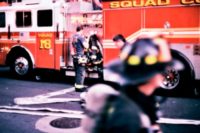 The National Fire Protection Association (NFPA) and the United States Fire Administration (USFA) are teaming up on a campaign to promote fire safety during winter months, when there are typically more home fires and home fire deaths. Safety information being offered on a host of topics under the umbrella “Put a Freeze on Winter Fires,” which is aimed at raising awareness of winter fire risks and providing tools and information that can be used to reduce these risks.
The National Fire Protection Association (NFPA) and the United States Fire Administration (USFA) are teaming up on a campaign to promote fire safety during winter months, when there are typically more home fires and home fire deaths. Safety information being offered on a host of topics under the umbrella “Put a Freeze on Winter Fires,” which is aimed at raising awareness of winter fire risks and providing tools and information that can be used to reduce these risks.
A checklist of reminders
Preparing for a new season is the first step in addressing safety. NFPA and USFA offer 10 Tips to Get Ahead of the Winter Freeze, a printable checklist of reminders, such as checking that vents have been cleaned and inspected, and furnaces have been inspected and serviced.
The campaign will begin with a focus on cooking fire safety and heating fire safety. Cooking is the leading cause of home fires and home fire injuries, and the third leading cause of home fire deaths. November usually signals a time of increased cooking fires as Thanksgiving is the peak day for cooking fires with roughly three times the average number of cooking fires. It also marks the beginning of the holiday season and a lot of cooking. In fact, Christmas and Christmas Eve rank second and third in cooking fires. Unattended cooking is the leading cause of cooking fires. Most cooking fires involve the range or cooktop.
Portable space heaters a common cause of home fires
Heating is the second leading cause of home fire deaths, behind smoking, and the second leading cause of home fire injuries. In 2007-2011, most home heating fire deaths (81 percent) and injuries (70 percent) involved stationary or portable space heaters.
For tip sheets, videos and other information on how to prevent cooking, heating and other types of fires, visit www.nfpa.org/winter and www.usfa.fema.gov/winter for an extensive list of resources. Check out the new online quiz and stay tuned to www.nfpa.org/winter or follow NFPA and USFA on social media for updates, new materials and other interactive ways to brush up on fire safety.
NFPA develops more than 300 codes and standards to minimize the possibility and effects of fire and other hazards. All NFPA codes and standards can be viewed at no cost at www.nfpa.org/freeaccess.






